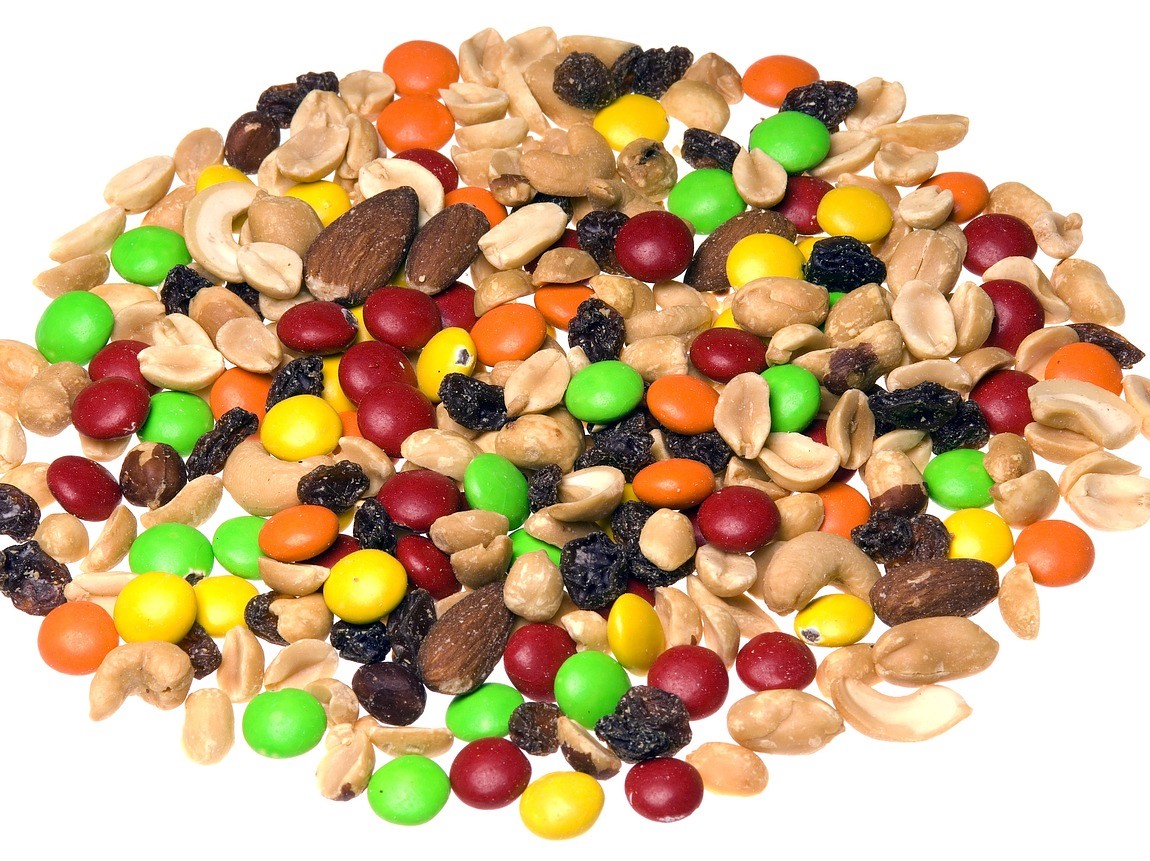Published:
October 8, 2022
Smart Snacks step-by-step: Start with the general standards

Smart Snacks can get a little complicated, so let's take it step by step.
First, it's important to know that some foods ALWAYS fit into the guidelines!
These include:
- Fresh and frozen fruits and vegetables with no added ingredients other than water
- Canned fruits with no added ingredients and packed in water, 100% juice, or extra light or light syrup
- Canned vegetables with no added ingredients other than water
- Entrees sold that day or the day after as part of a reimbursable meal
Other than foods or beverages that automatically qualify as Smart Snacks, items you are considering must first meet one of the three GENERAL Smart Snacks standards.
- It is a whole grain-rich product. A whole grain-rich product is a grain-based food with at least 50% whole grains by weight. This general standard might be met by items such as granola bars or muffins.
- The first ingredient is a fruit, vegetable, dairy product, or protein food. Dried and dehydrated fruits and vegetables are acceptable. However, dehydrated or concentrated fruit JUICE or PUREE are considered added sugars and do not meet this standard.
- The item is a combination food with two or more components representing two or more food groups. The item must also include at least ¼ cup of fruit and/or vegetable. Note: Two items packaged together can be considered a combination food (e.g., yogurt with a piece of fruit).
Here are some examples to help you test your knowledge. Do these meet the general standards? Jot down YES or NO for each one. We'll list answers and explain more below!
- Slice of banana bread (Bananas*, quick oats, whole wheat flour, all purpose flour, eggs, canola oil, sugar, baking soda, baking powder, salt) *Less than 1/8 cup of fruit per serving
- Parfait with yogurt, berries, and granola (Low-fat vanilla Greek yogurt, ¼ cup blueberries, ¼ cup strawberries, granola)
- Grilled cheese sandwich (Reduced-fat cheddar cheese, whole wheat bread, cooking spray)
- Package of almonds (Almonds, vegetable oil, salt)
- House-made trail mix (Mixed nuts, raisins (credits as 1/4 cup fruit per serving), colored chocolate candies)
- Baked potato chips (Dried potatoes, corn starch, corn oil, sugar, sea salt, soy lecithin, dextrose, annatto extracts)
- Stir-fry with chicken and vegetables (Chicken breast, broccoli, carrots, bell pepper, brown rice, low-sodium teriyaki sauce)
- Blueberry muffin (Sugar, all purpose flour, oats, water, soybean oil, eggs, blueberries, baking soda, baking powder, salt)
- Whole hardboiled egg (Egg, salt)
Ready for the answers and some extra info?
1. Slice of banana bread (Bananas*, quick oats, whole wheat flour, all purpose flour, eggs, canola oil, sugar, baking soda, baking powder, salt) *Less than 1/8 cup of fruit per serving
- YES - This meets the general standards because it has a fruit (banana) as the first ingredient. It might also meet the general standards as a grain product with at least 50% whole grain.
- How do we know it's whole grain-rich? Ingredients are listed on packaging in descending order of weight. If this were a house-made recipe, you would need to measure the weight of each ingredient. If the weight of the quick oats and whole wheat flour together are at least half of the total weight of all ingredients, the recipe is whole grain-rich. If this were a packaged food, you can refer to information from the manufacturer, see if it includes an FDA-approved whole grain claim, or look to see if it is a WIC-approved whole grain food. Check out the USDA's Whole Grain Rich Resource for more information!
2. Parfait with yogurt, berries, and granola (Low-fat vanilla Greek yogurt, ¼ cup blueberries, ¼ cup strawberries, granola)
- YES - This meets the general standards because it has a dairy product/protein food (Greek yogurt) as the first ingredient. It is also a combination food with at least 1/4 cup of fruit.
3. Grilled cheese sandwich (Reduced-fat cheddar cheese, whole wheat bread, cooking spray)
- YES - This meets the general standards because it has a dairy product/protein food (cheddar cheese) as the first ingredient.
4. Package of almonds (Almonds, vegetable oil, salt)
- YES - This meets the general standards because it has a protein food (almonds) as the first ingredient.
5. House-made trail mix (Mixed nuts, raisins (credits as 1/4 cup fruit per serving), colored chocolate candies)
- YES - This meets the general standards because it has a protein food (mixed nuts) as the first ingredient. It is also a combination food with at least 1/4 cup fruit.
6. Baked potato chips (Dried potatoes, corn starch, corn oil, sugar, sea salt, soy lecithin, dextrose, annatto extracts)
- YES - This meets the general standards because it has a vegetable as the first ingredient.
7. Stir-fry with chicken and vegetables (Chicken breast, 1/2 cup stir fry vegetables, brown rice, low-sodium teriyaki sauce)
- YES - This meets the general standards because it has a protein food (chicken) as the first ingredient. It is also a combination food with at least 1/4 cup of vegetable.
8. Blueberry muffin (Sugar, all purpose flour, oats, water, soybean oil, eggs, blueberries, baking soda, baking powder, salt)
- NO - this does not meet any of the general standards. It is not at least 50% whole grain. Other examples of grain-based foods that are not whole grain-rich may include certain brands of: Granola or snack bars; breakfast items like pancakes, waffles, French toast sticks; and salty snacks like pretzels or chips. However, there are many brands that do have whole grain-rich options!
9. Whole hardboiled egg (Egg, salt)
- YES - this meets the general standards because it has a protein food (egg) as the first ingredient.
Remember, several of these (banana bread slice, yogurt and fruit parfait, grilled cheese sandwich, stir-fry) would automatically qualify as a Smart Snack if served as the entree in a reimbursable meal that day or the day before!


